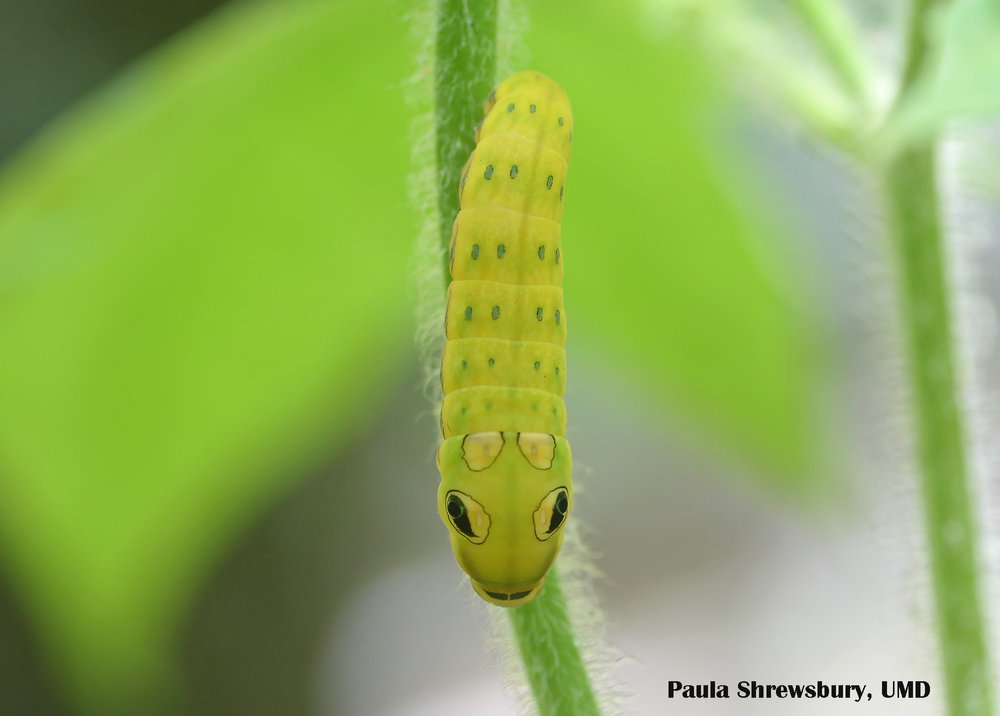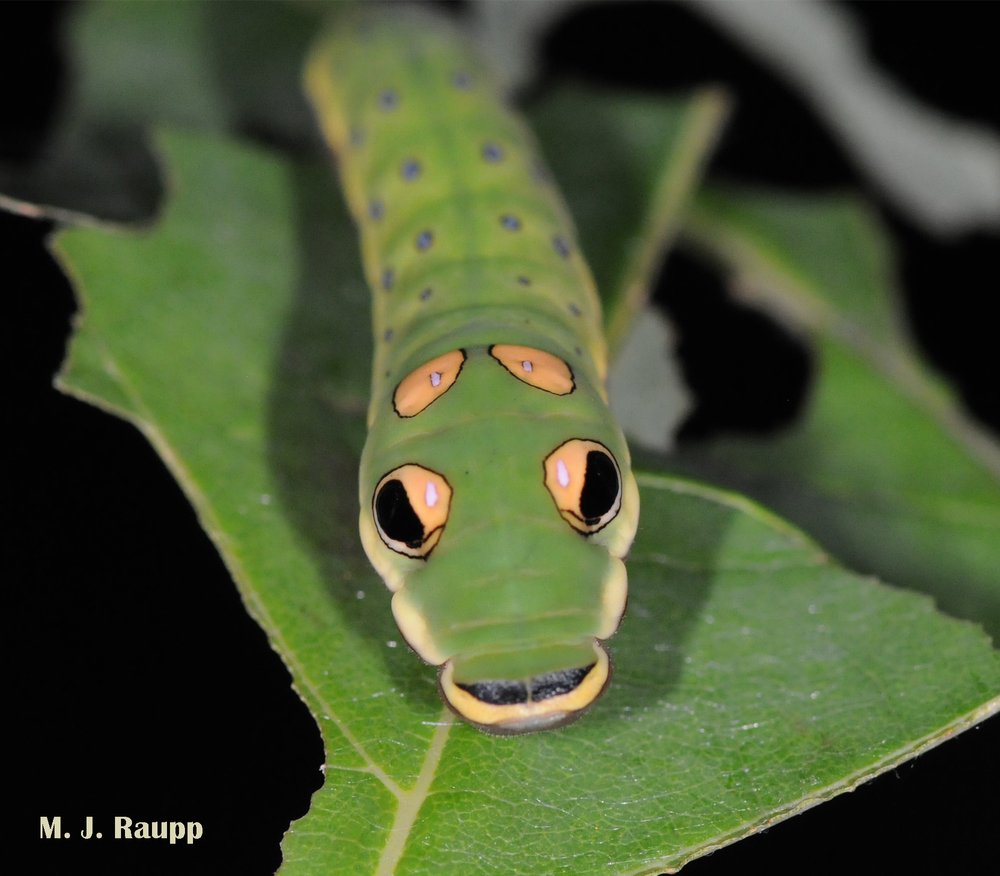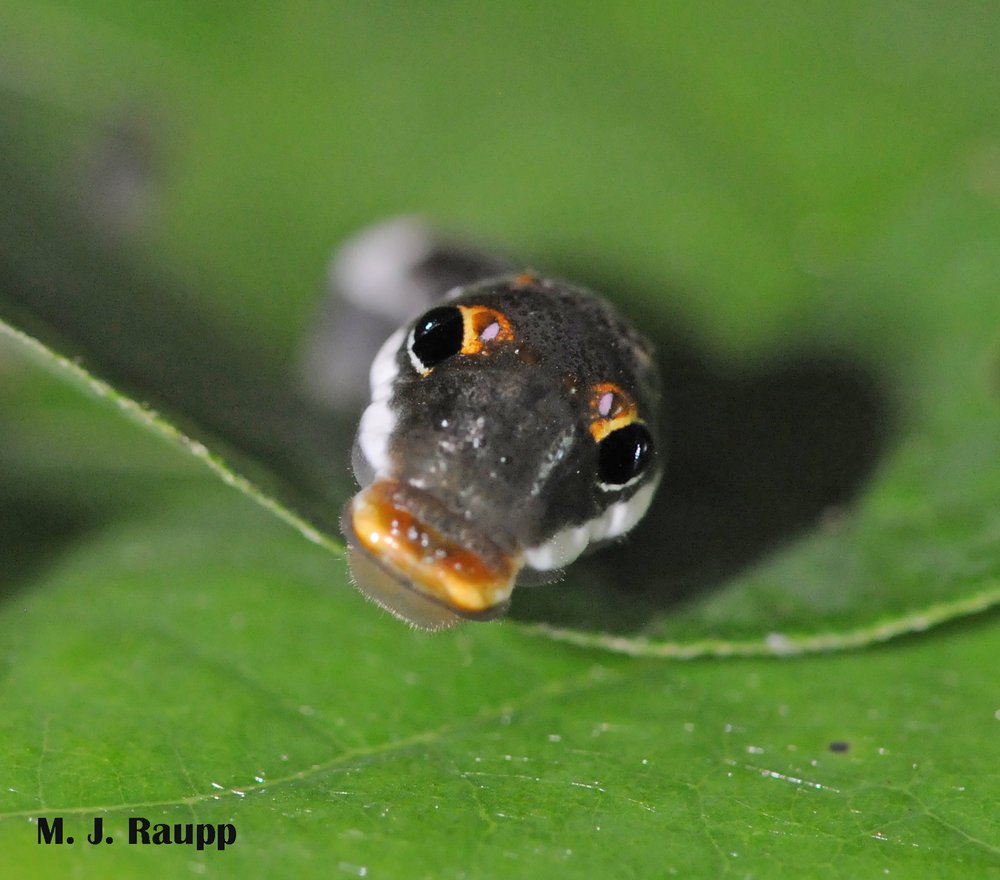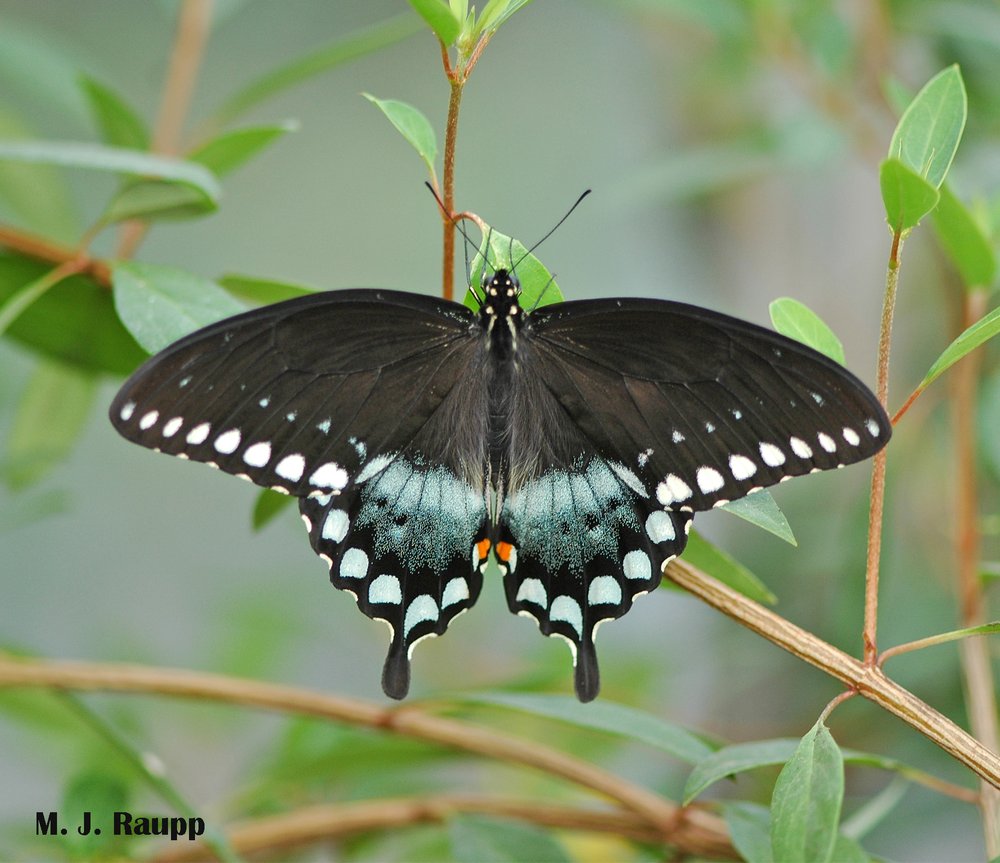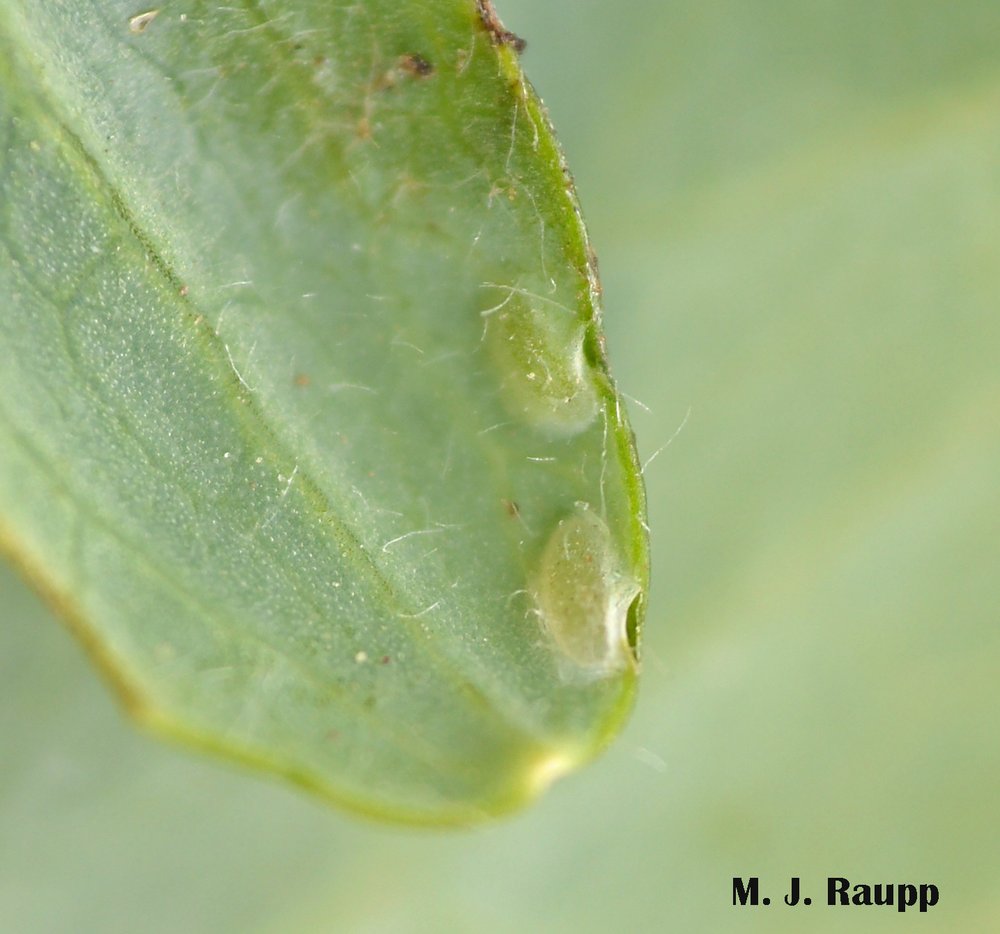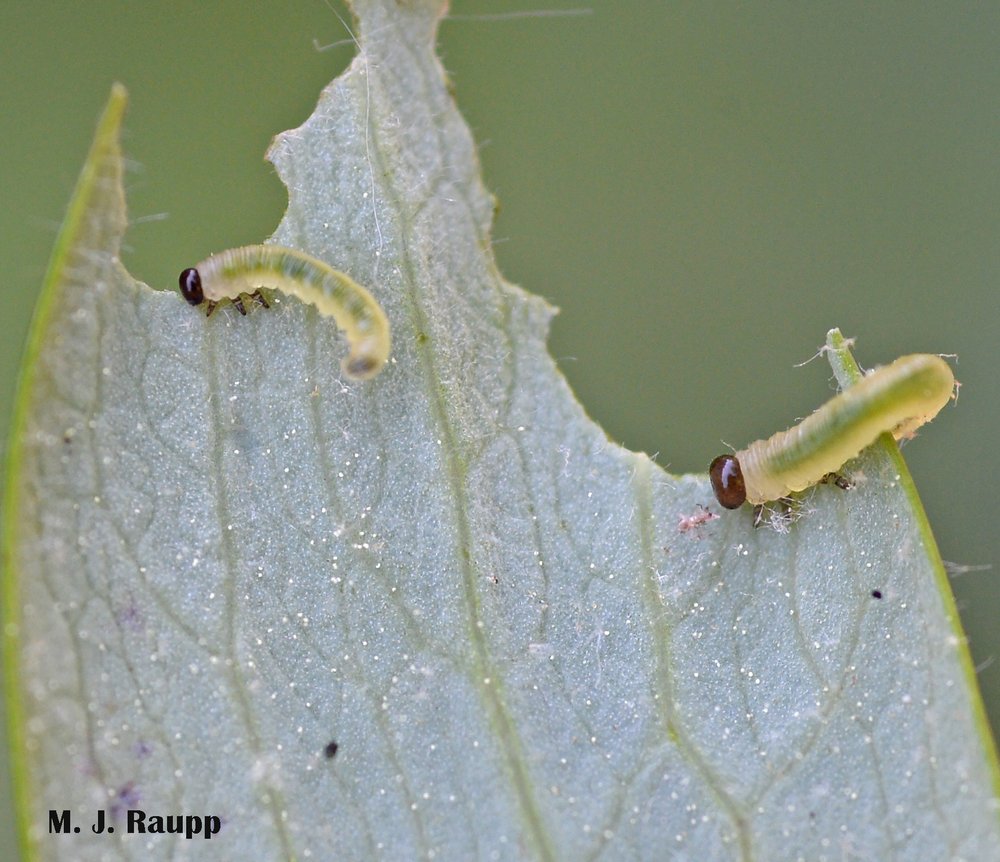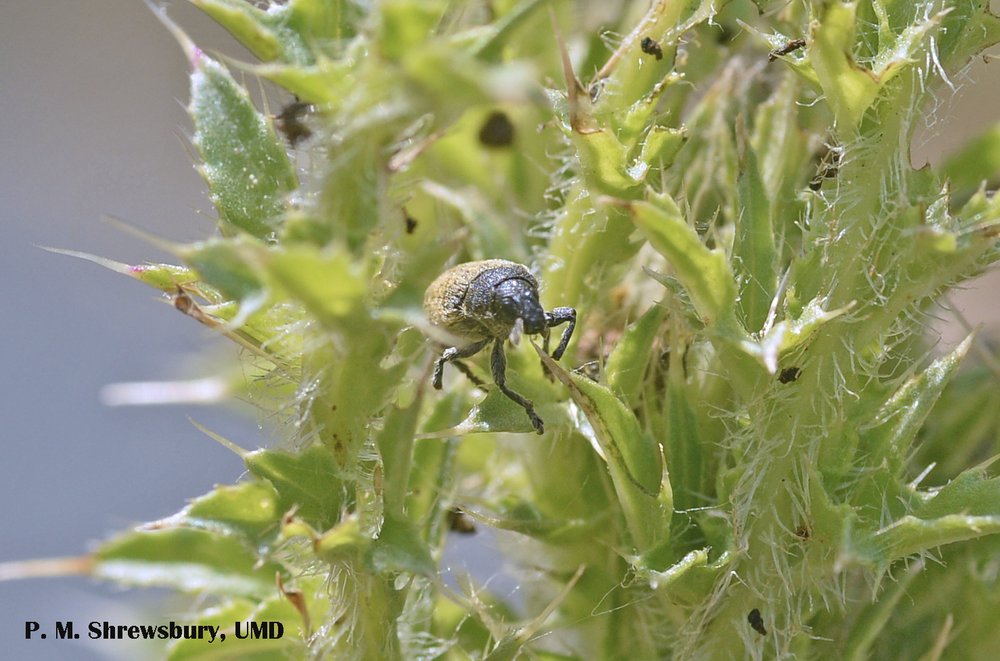
Amidst defoliated leaves and deposits of beetle frass, a thistle head weevil stares back at a bug geek. Image: Paula M. Shrewsbury, PhD
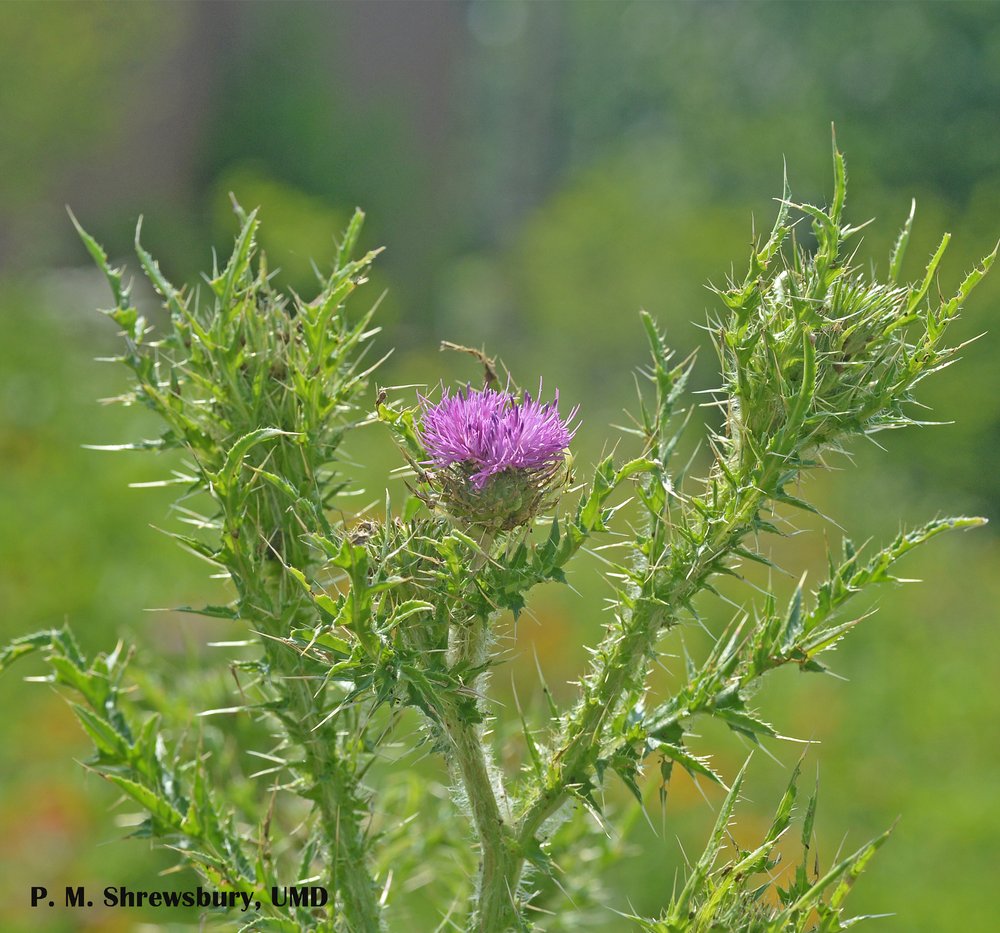
Spiny plumeless thistles and several other thistles from abroad create major problems for agricultural crops and natural ecosystems throughout North America.
Invasive species of plants and insects levy billions of dollars of losses to crops, forests, and gardens annually in the US. Some of the most noisome plant invaders of agricultural lands are exotic thistles such as bull thistle, Scotch thistle, and musk thistle. While admiring a gorgeous pollinator meadow in Natural Bridge, Virginia, we were introduced to yet another pretty invasive thistle with the curious moniker of spiny plumeless thistle, Carduus acanthoides. These prickly rascals invaded the meadow and were crowding out flowering native plants, beauties that help support our pollinators and other beneficial insects. On closer inspection, several spiny thistles clearly were suffering from a bad case of blossom rot and defoliation. Tiny beetles behind this mayhem were weevils from afar known as thistle head weevils, Rhinocyllus conicus. How did this saga begin?
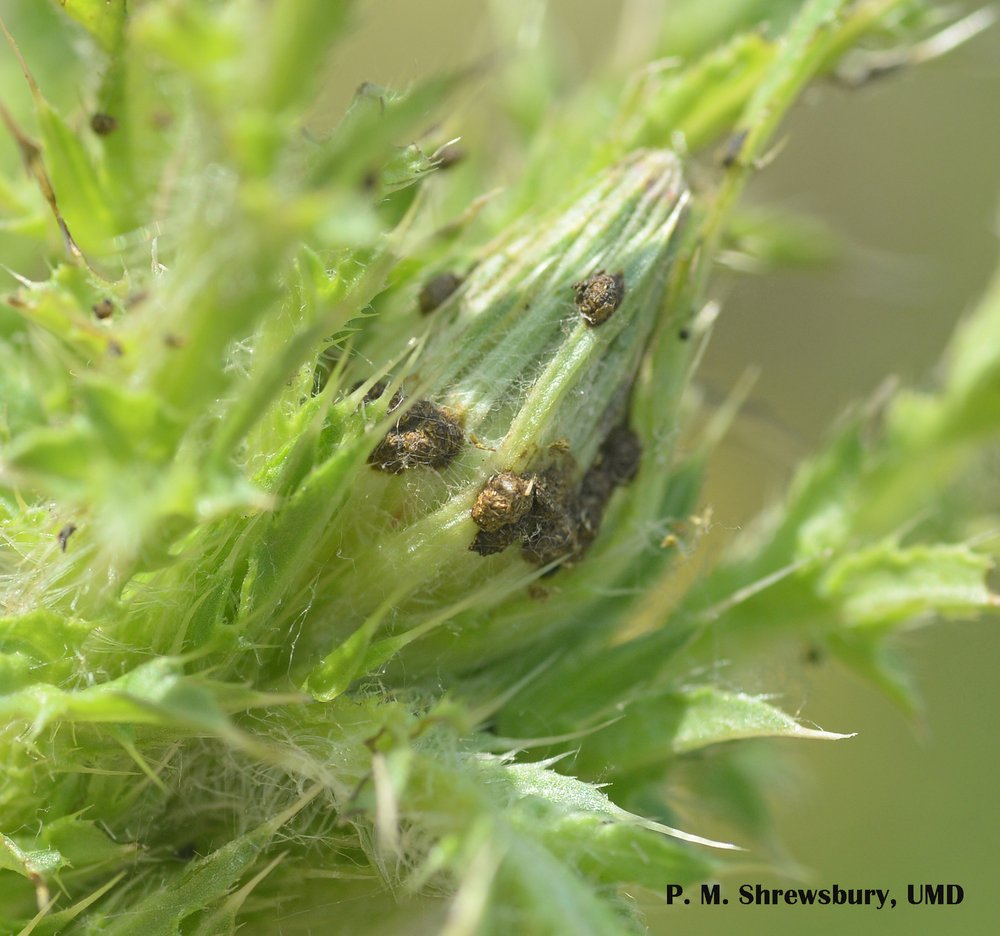
Flower heads infested with weevil larvae will fail to produce seeds.
Noxious spiny plumeless thistles are native to Europe and Asia and were first detected in the US in Camden, New Jersey, in 1878. Agricultural scientists searched the realms of several invasive thistles and discovered the thistle head weevil, which is native to parts of Europe, North Africa, and western Asia. Weevils were introduced into Canada in 1968 with subsequent introductions to California, Virginia, and Montana in 1969 for the purpose of putting a beat-down on several species of non-native thistles. Populations of thistle head weevils from Virginia were then redistributed to other states. As we wandered the meadow, every spiny thistle we encountered was under attack or bore the scars of attack by these small beetles as they munched leaves, defecated, found romance, and laid eggs on the bracts and leaves of developing flower heads. While defoliation caused by adult feeding weakens thistles, the coup de gras comes when adults deposit eggs on developing flower heads, weevil larvae subsequently hatch and then consume reproductive plant tissues before flowers can form and produce seeds. This foils reproduction in infested thistles. Scientists in Oklahoma report that thistle head weevils can reduce invasive thistles by 90% or more in 10 years or less following their introduction to an infested area. Thistle head weevils are prodigious reproducers with each female capable of laying 100 to 200 eggs during her one-year life cycle.
Spiny plumeless thistles, native to Eurasia, have invaded this pretty pollinator meadow in Virginia. But thistles are besieged by small exotic beetles called thistle head weevils, leaf munchers that deposit eggs in developing flower heads. Weevil larvae hatch from eggs and bore through the flower head, eliminating the flower’s ability to produce seeds. Over a period of several years these beetles can dramatically reduce invasive thistle populations in an area. Unfortunately, they also attack thistles native to North America, imperiling some endemic species. Watch as a mating pair is soon joined by other hungry weevils.

Thistle head weevils have a short snout. Hiding on a thistle was a similar weevil with a long snout. Could this weevil be the thistle bud weevil, Larinus planus? Like the thistle head weevil, the thistle bud weevil was imported from Europe to help control thistles in North America.
We just met thistle head weevils playing the role of Dr. Jekyll. Now let’s meet Mr. Hyde. Following the release of thistle head weevils in North America in the 1960’s, scientists discovered that the host range of the weevil included some 22 species of native North American thistles. Thistle head weevils pose a serious threat to many endemic thistles, including a California native on the federal endangered species list called the Suisun thistle. Since the time of the first introductions of thistle head weevils to the US, and with greater understanding of potential harm the weevil might cause to native thistles, in 2000 USDA cancelled all permits for interstate movement of the thistle head weevil. Nonetheless, for better or for worse, thistle head weevils are here to stay as terminators of noxious invasive thistles. The big “oops” is the thistle head weevil’s ongoing threat to our home-grown native thistles.
Acknowledgements
Bug of the Week thanks Dr. Paula Shrewsbury for images that served as the inspiration for this episode. The following articles provided interesting facts and information for this story: “Musk thistle weevils take a stand against pasture bullies” by Lacey Newlin, “Rhinocyllus conicus (Coleoptera: Curculionidae)” by L. T. Kok”, “Invasive species: What everyone needs to know” by D. Simberloff, and “Rhinocyllus conicus” and “Larinus planus” Integrated Weed Control Program Staff, Washington State University.
